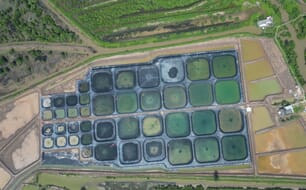“Over the past few years, Virginia has become the oyster capital of the East Coast, and that is great news for our Commonwealth’s economy,’’ said Governor Terry McAuliffe.
“The growth we’ve seen in the oyster harvest is extraordinary, but hardly a surprise. Virginia produces the best tasting oysters in the world, and every sustainably-harvested oyster helps clean the Chesapeake Bay and create good jobs in a tough economy. There is no question that Virginia is for oyster lovers.”
Over the past 12 years, the oyster harvest in Virginia has increased from 23,000 bushels in 2001 to an estimated 504,000 bushels last year. This is the highest level seen since 1987 and is 25 per cent more than the 409,000 bushels harvested in 2012.
Preliminary harvest estimates show gains in both wild-caught oysters from public oyster rocks as well as from privately leased water bottoms.
Harvest from public oyster grounds grew from 150,534 bushels in 2012 to 213,152 bushels last year, and the harvest from privately leased growing areas continued six years of sustained growth, rising from 258,496 bushels in 2012 to 408,912 bushels last year.
“State investments in our oyster replenishment programme are showing positive results,” said Molly Joseph Ward, Secretary of Natural Resources.
“Keeping this momentum is vital to the growth of the oyster industry. Our comprehensive fisheries management programs, combined with private sector investments, are having a very positive impact for the Bay, consumers and the economy. We need to keep moving forward.”
The dockside value of the oyster harvest increased to $22.2 million last year, up from $16.2 million in 2012.
The ripple effects through the economy from last year’s harvest resulted in an estimated $58.4 million in economic value, using a multiplier of 2.63 on a dockside value of $22.2 million, a formula established by the late Dr James Kirkley, a well-respected Virginia Institute of Marine Science seafood industry economist.
The Virginia Marine Resources Commission’s management of the oyster stocks includes rotational oyster harvest areas and deployment of fossil oyster shells mined annually from the beneath James River on to public oyster grounds. These fossil shells become home for naturally occurring oyster larvae that attach to them during spawning and grow to form new adult oysters that will reach market size in roughly three years.
This oyster replenishment program provides substantial ecological as well as economic benefits, as the oysters filter the water during growth to a market size of three inches. Oyster reefs provide important forage and refuge habitat for invertebrates as well as juvenile crabs and finfish species.
“Oysters are doing well right now. We are making tremendous progress,’’ said VMRC Commissioner John M.R. Bull.
“But oysters are still susceptible to disease and other environmental factors outside of our control. A lot of people have put a lot of work into getting Virginia into this position and it is paying dividends. It is worth celebrating, but we need to keep in mind that oysters live in a dynamic, ever-changing ecosystem.”


